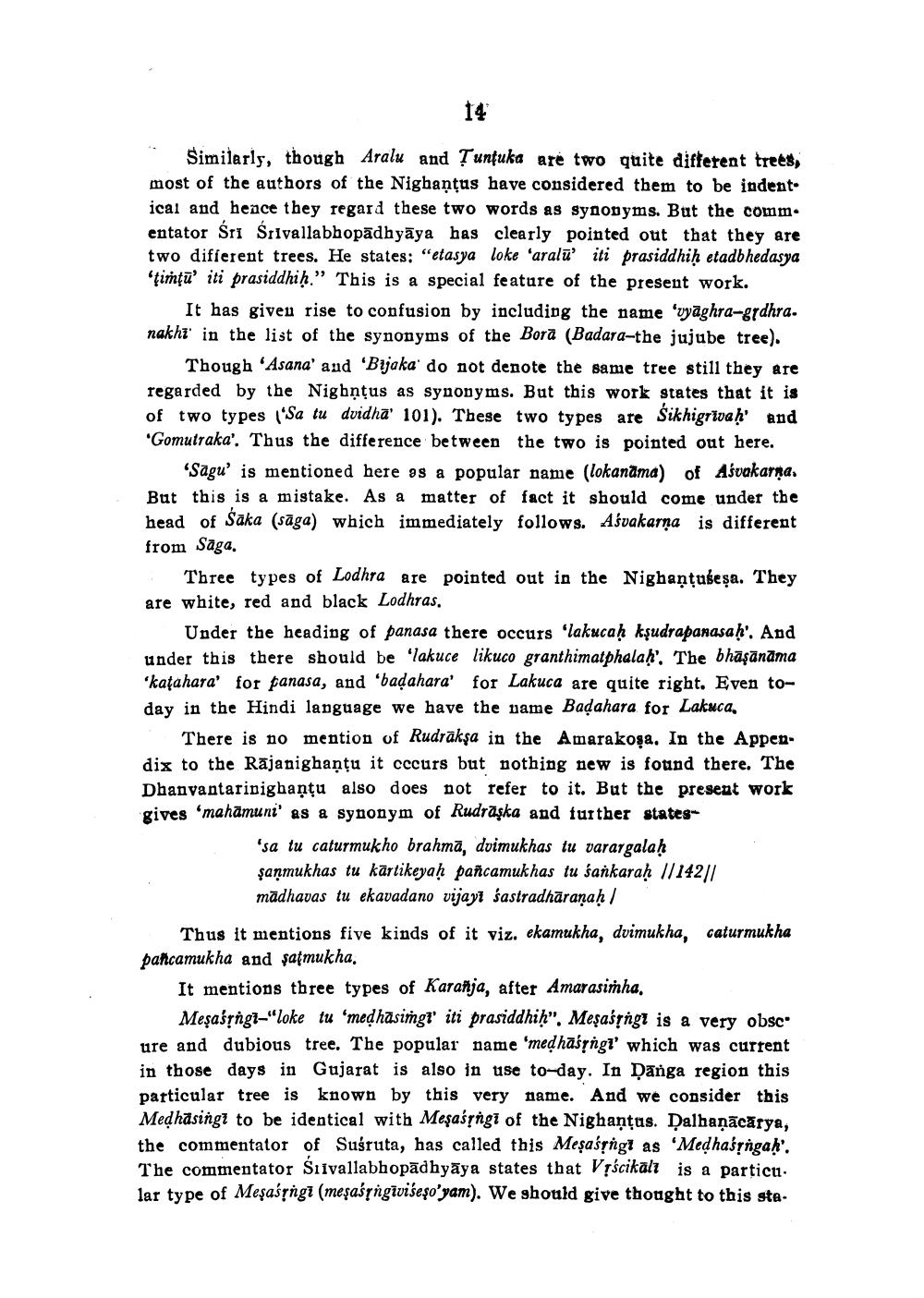________________ 14 Similarly, though Aralu and Tuntuka are two quite different trees, most of the authors of the Nighantus have considered them to be indent. ical and heace they regard these two words as synonyms. But the comm. entator Sri Srivallabhopadhyaya has clearly pointed out that they are two different trees. He states: "etasya loke 'aralu' iti prasiddhih etadbhedasya 'timtu' iti prasiddhih." This is a special feature of the present work. It has giveu rise to confusion by including the name 'vyaghra-grdhra. nakht in the list of the synonyms of the Bora (Badara-the jujube tree). Though 'Asana' and 'Bijaka' do not denote the same tree still they are regarded by the Nighatus as synonyms. But this work states that it is of two types "Sa tu dvidha' 101). These two types are Sikhigrivah' and "Gomutraka'. Thus the difference between the two is pointed out here. "Sagu' is mentioned here as a popular name (lokanama) of Asvokarna. But this is a mistake. As a matter of fact it should come under the head of Saka (saga) which immediately follows. Asvakarna is different from Saga. Three types of Lodhra are pointed out in the Nighantusesa. They are white, red and black Lodhras. Under the heading of panasa there occurs 'lakucah ksudrapanasah'. And under this there should be 'lakuce likuco granthimatphalak'. The bhasanama "katahara' for panasa, and 'badahara' for Lakuca are quite right. Even today in the Hindi language we have the uame Badahara for Lakuca. There is no mention of Rudraksa in the Amarakosa. In the Appendix to the Rajanighantu it cccurs but nothing new is found there. The Dhanvantarinigbantu also does not refer to it. But the present work gives 'mahamuni' as a synonym of Rudraska and further states 'sa tu caturmukho brahma, dvimukhas tu varargalah sanmukhas tu kartikeyah pancamukhas tu sankarah 1/142|| madhavas tu ekavadano vijayi sastradharanah/ Thus it mentions five kinds of it viz. ekamukha, dvimukha, caturmukha pahcamukha and satmukha. It mentions three types of Karanja, after Amarasimha. Mesasrngt-"loke tu 'med hasingt' iti prasiddhih". Mesasongi is a very obsco ure and dubious tree. The popular name 'medhasrngi' which was current in those days in Gujarat is also in use to-day. In Danga region this particular tree is known by this very name. And we consider this Med hasingi to be identical with Mesasingi of the Nighantus. Dalhanacarya, the commentator of Susruta, has called this Mesastngt as Med hassaga". lar type of Mesasrngi (mesasrngiviseso'yam). We should give thought to this sta.




